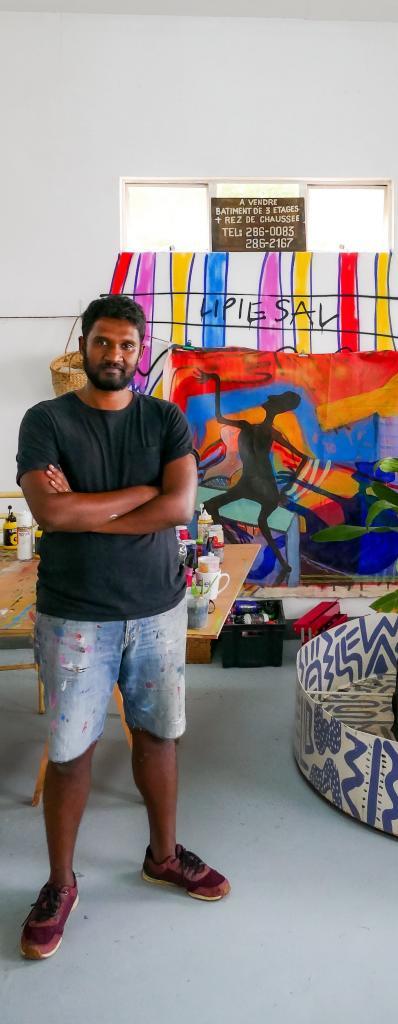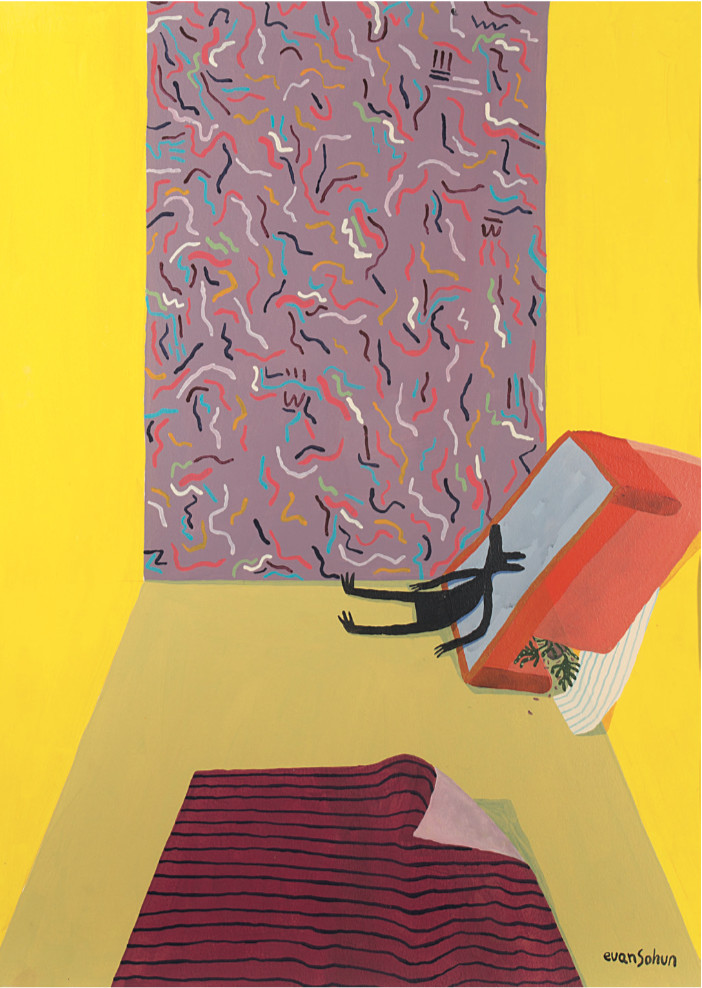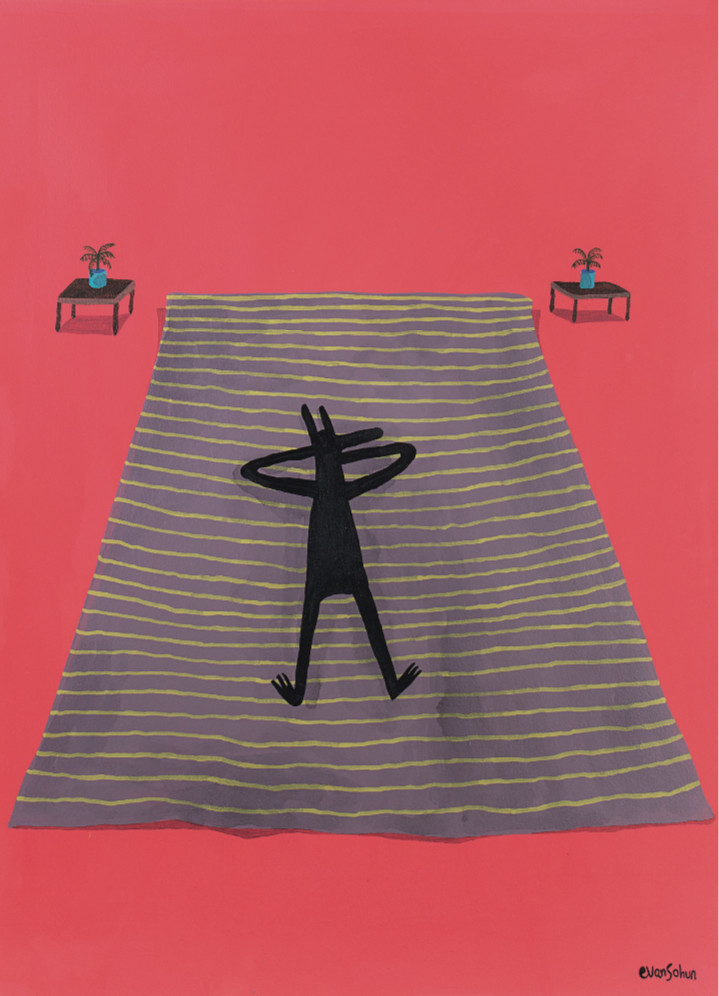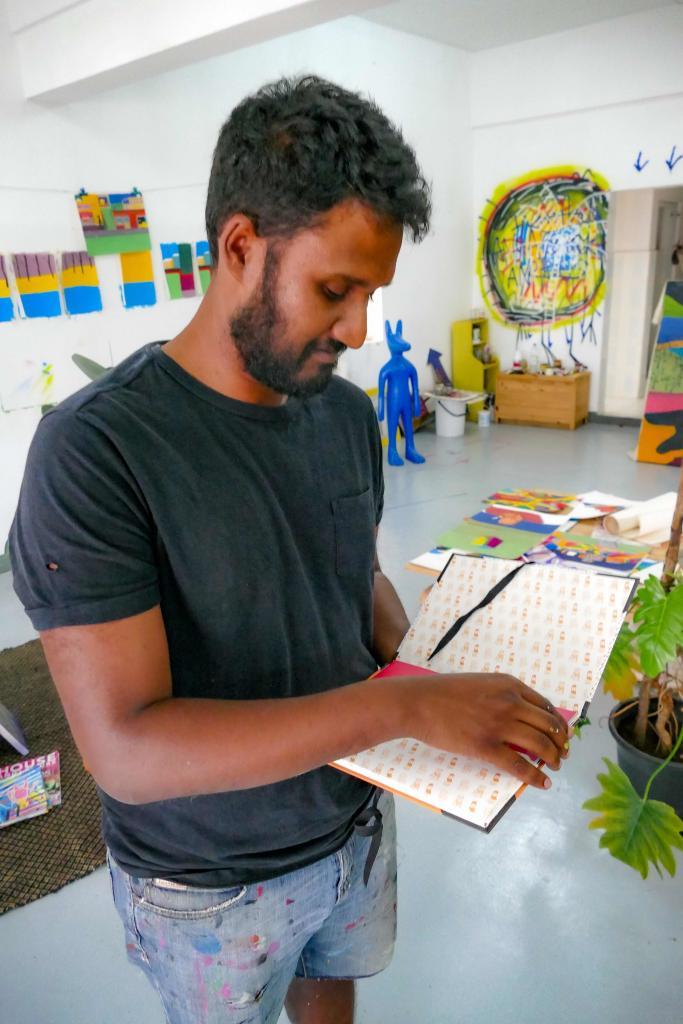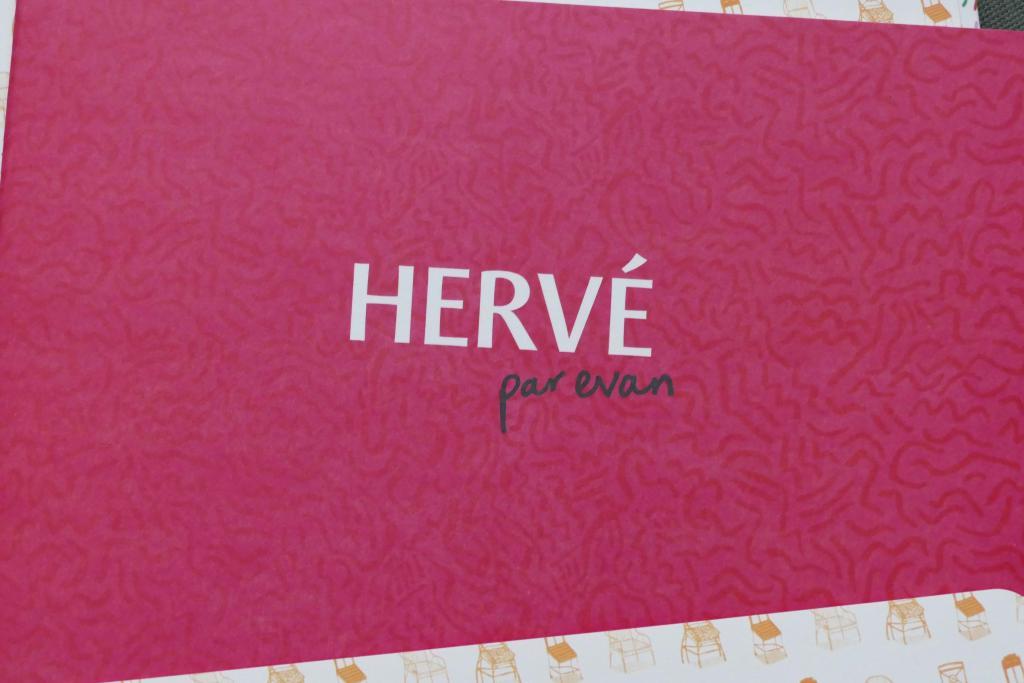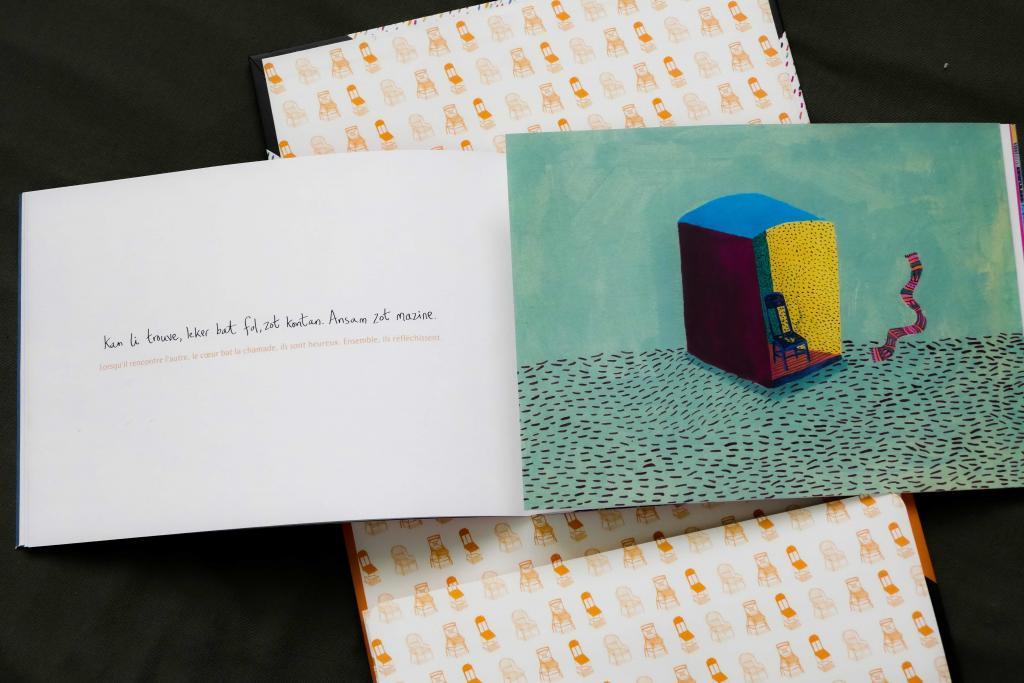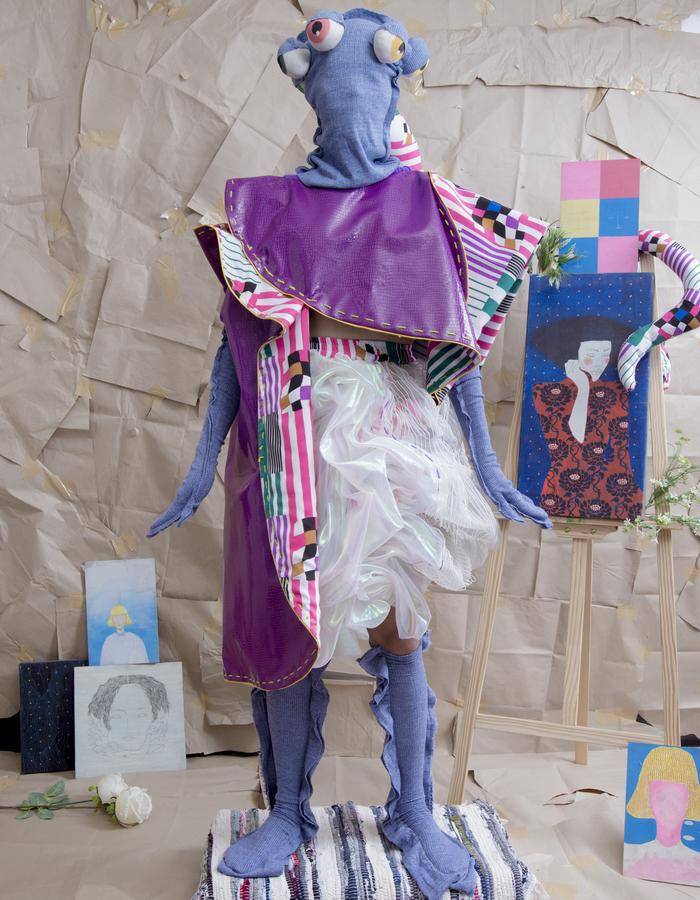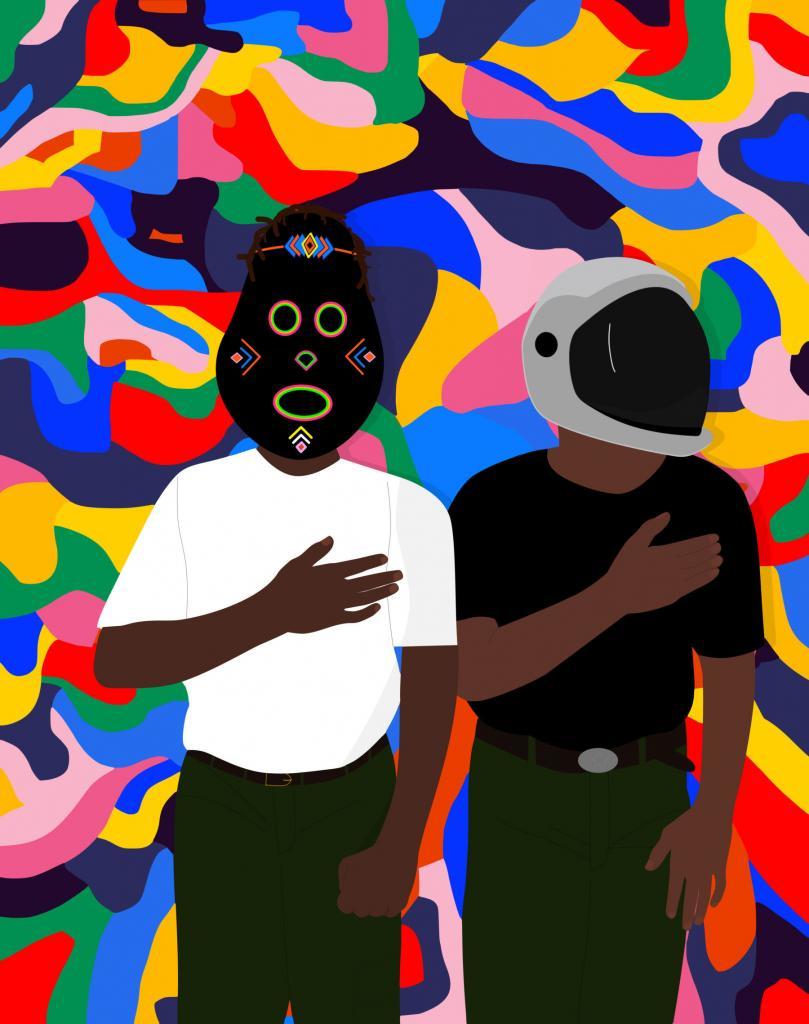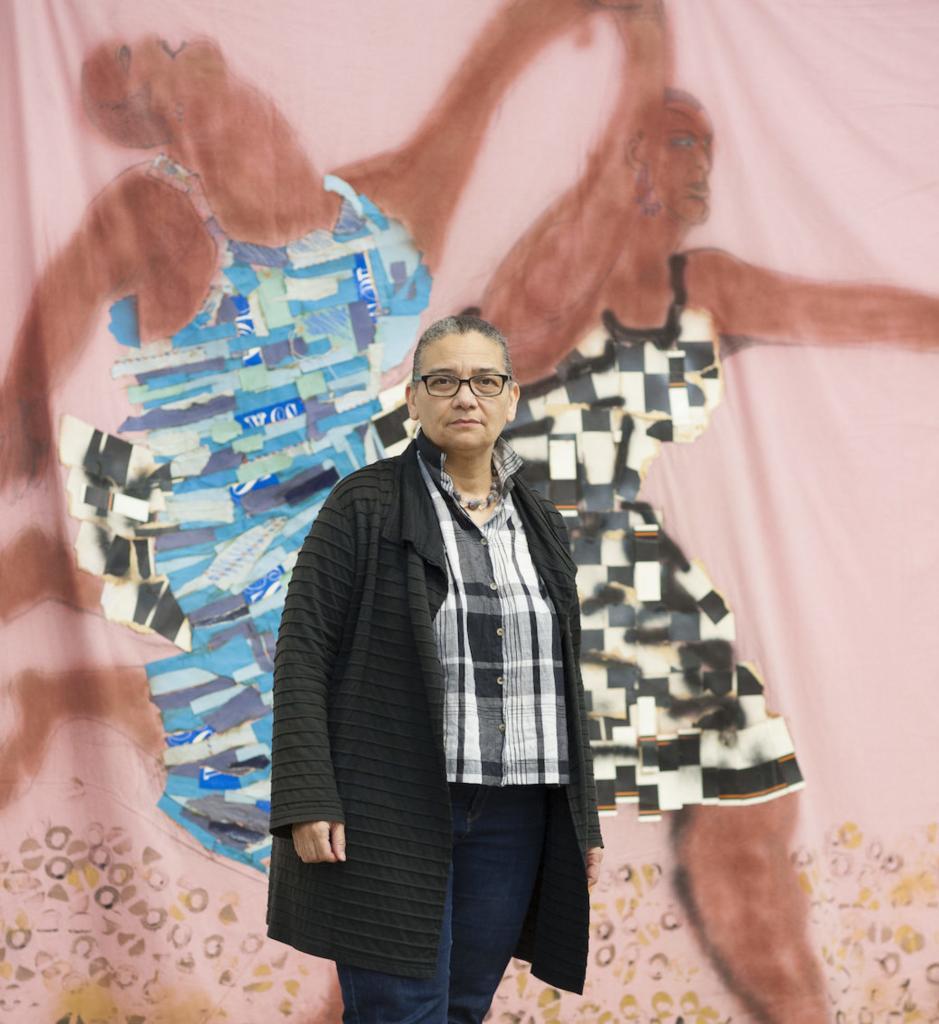Meet the artist Evan Sohun
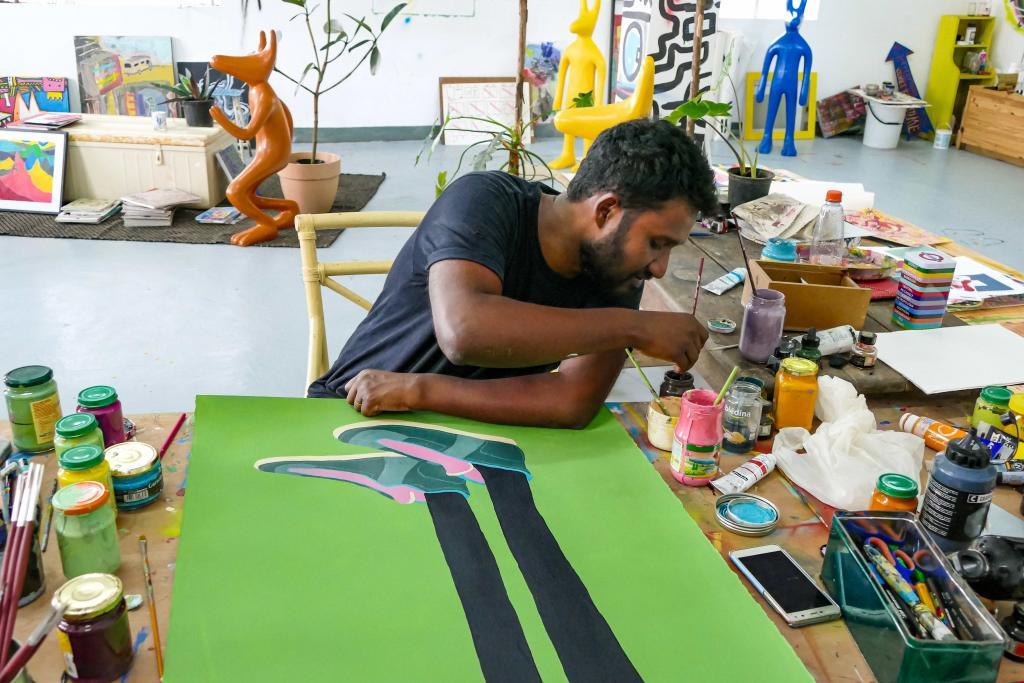
When asked to introduce himself, Evan Sohun answers with humility and a shy smile, “I’m a painter.” We find out soon enough that it’s a bit reductive for this talented visual artist. “I always liked to draw but I wasn’t good technically.” Since his debut, his art has evolved a lot in about 15 years for this young artist born in Mauritius in 1985. “About fifteen years ago, the references we were exposed to as comic book artists were the Franco-Belgian comic book authors with a clean, fine drawing style, with a well mastered technique. And I didn’t find myself in it. I told myself then that I couldn’t draw”. He leaves for studies of Graphic Design in London from where diverse and varied artistic inspirations emerge. After three years of study, he decided in 2007 to return home. “When I returned to Mauritius, I find myself confronted with the harsh reality of life and the job market.“ Not being essentially satisfied with comics, he feels the need to broaden his practice “I chose to explore new worlds because I felt limited in comics and I was thirsty for new artistic discoveries.”
Evan attends several book fairs and his work is published in more than a dozen books locally and internationally. However, it is only in 2013 that Evan began to transcribe his universe on canvases following his meeting with the artist and friend Gael Froget, who now rents him a space on the ground floor of his studio. The artist strongly encourages him to paint.
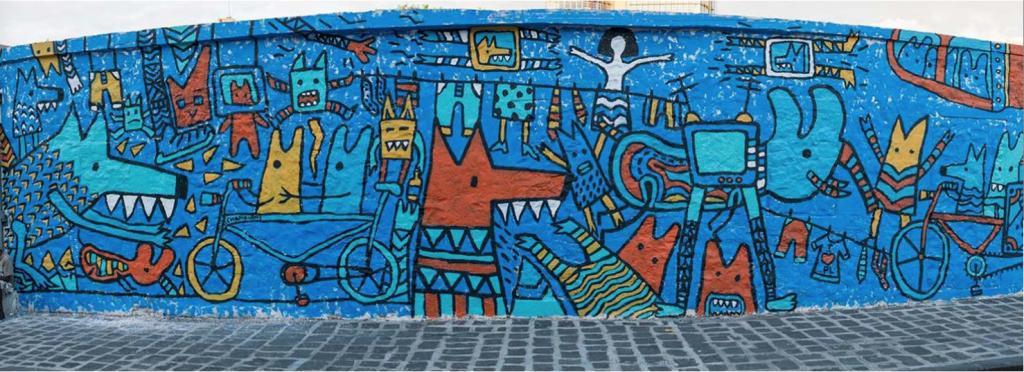
In 2015, during a cultural festival in Mauritius, Evan is invited to create a large mural fresco. Since then, his universe has been appearing on the walls and in the urban spaces of his country. He multiplies collaborations. He exhibits both on the island (Mauritius National Contemporary Art Festival in 2016, 1st solo show in 2017 at the Imaaya Gallery, a mural fresco commissioned in Mauritius by Sanlam Private Wealth), and in South Africa (Com!cs Focus at AVA Gallery in Cape Town in 2018). “2019 was a very intense year for me,” says Evan. Indeed the rising star of Mauritius1 as Kervina Jeewooth-Chinnayya an art collector in Mauritius likes to refer to him has just had her second solo exhibition at the Imaaya Gallery and unveils her latest publication: an art book : “Hervé par Evan” published in September 2019 by La Maison des Mécènes – a publishing house founded by the cultural activist Brigitte Masson, daughter of Hervé Masson -, which includes a series of paintings and a poem he made in homage to the painter, engraver, poet and journalist Hervé Masson, who died in 1990 and whose centenary is being celebrated that same year. With this art book, Evan narrates an abstract interpretation of Hervé’s life journey, which was in perpetual creative seeking all his life.
Last November, this indefatigable man also collaborated with French artist-designer Julie Stephen Chheng to create a mural on the wall of the Institut Français in Mauritius – in which Toudim, the signature figure of Evan and Tanukis, spirits of nature inspired by Japanese mythology and directed by Julie Stephen Chheng – evolve together in the universe created by Evan. All this in augmented reality, a practice that is at the heart of Julie Stephen Chheng’s artistic approach.
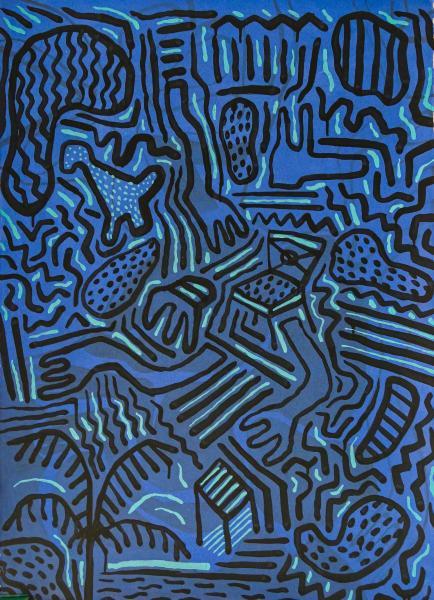
It is thus in the center of the island that Evan settles in the workshop that he currently occupies since 2016. As soon as you enter, quietness and brightness are the motto. It is difficult not to be caught by his sculptures in the pop colors of his main character named Toudim, half-man half-canine (dog, wolf), through which, the artist builds his quest for identity in the understanding of modern man. The toudims are his abstract representation of the human being. Based on the Mauritian Creole Tou dimounn which means everyone, Toudim has evolved in size and expression. “I created Toudim because I can hardly draw the human, at least not as I would have liked. On the other hand, I represent the human through this character. I give him human positions and attitudes. Before I attributed him facial expressions through the eyes, the muzzle, the canines, etc.. Now I wish to leave him free of any emotion. Toudim is faceless. He is universal. He is everyone”.
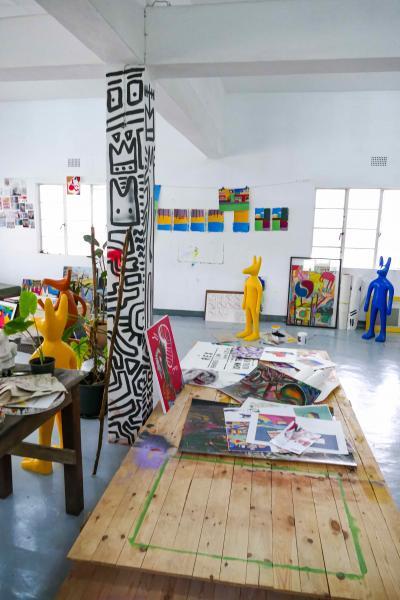
View of the Toudims in the studio of the artist Evan Sohun. © Crédit photo Artskop3437 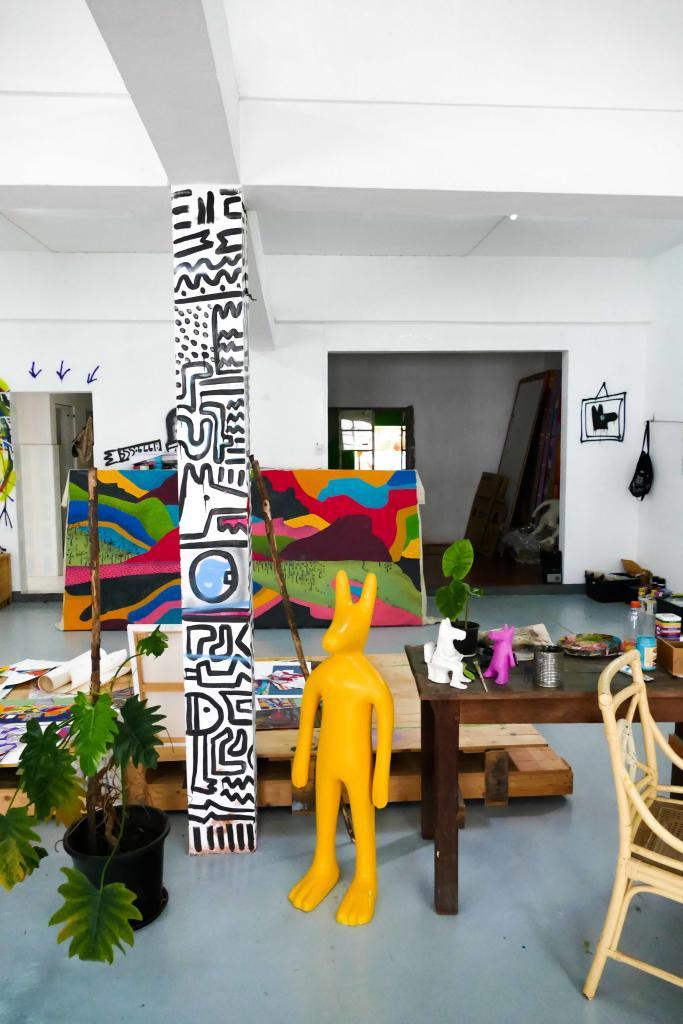
View of Toudim in the artist’s studio. In the background the work in progress “Sundays”.
© Photo Artskop3437
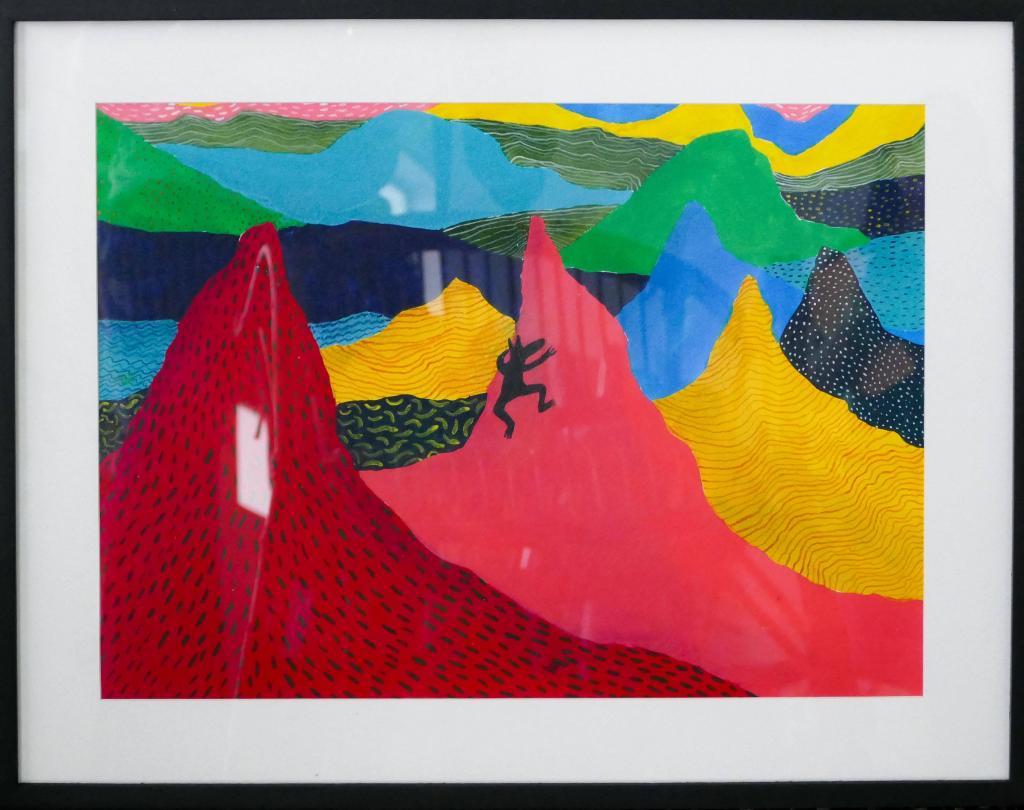
Toudim has followed Evan since his early days in comics and has evolved over time. “My desire and need to tell stories always comes through characters. But, also, I can really have fun with him. I can make him do and say things that I won’t have the courage to do or say.” In the course of the discussion, Evan reveals himself to be an accomplished multidisciplinary artist. He confides that he hopes to create a series of animated videos in the near future, in collaboration with a multi-media artist. Nothing seems to stop him. He’s brimming with molten creativity. His universe is black lines to surround bright colors, or pastels. A shifted universe, between dream and reality, urban landscapes and interiors of houses, his works are pop, joyful and colorful. A visual world that can make you think of Keith Haring without looking for an analogy, even if naturally the fact that these two artists have conceived their art outside of the classical academic paths, gives them a common point.
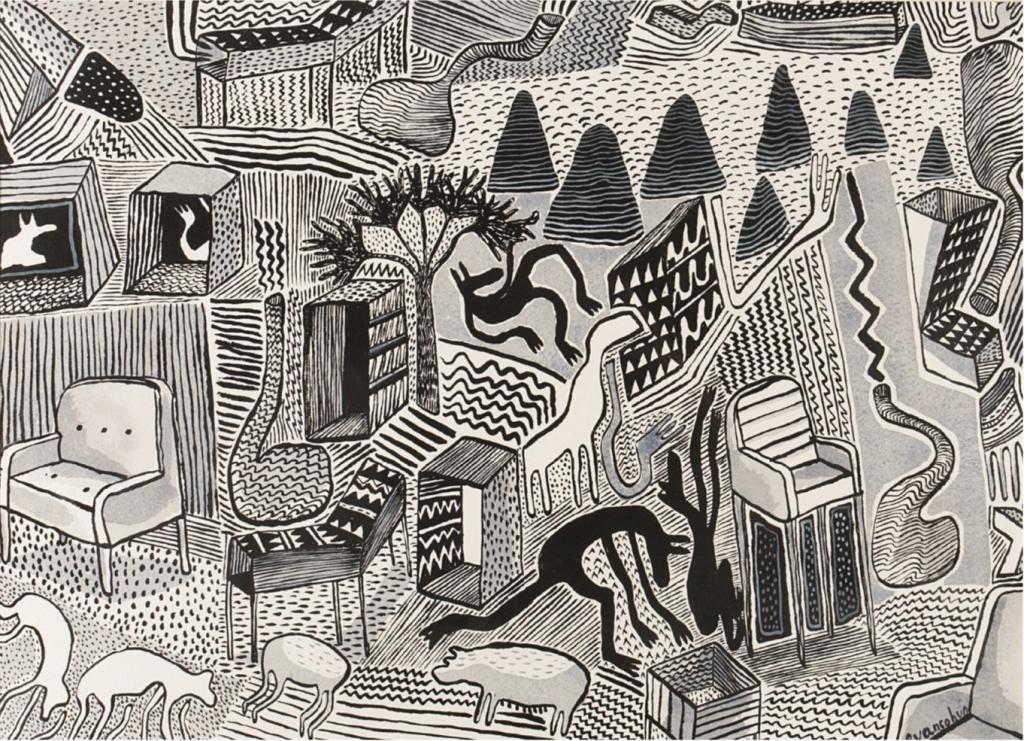
Colour as bait, denunciation as an entry point for deeper reflection
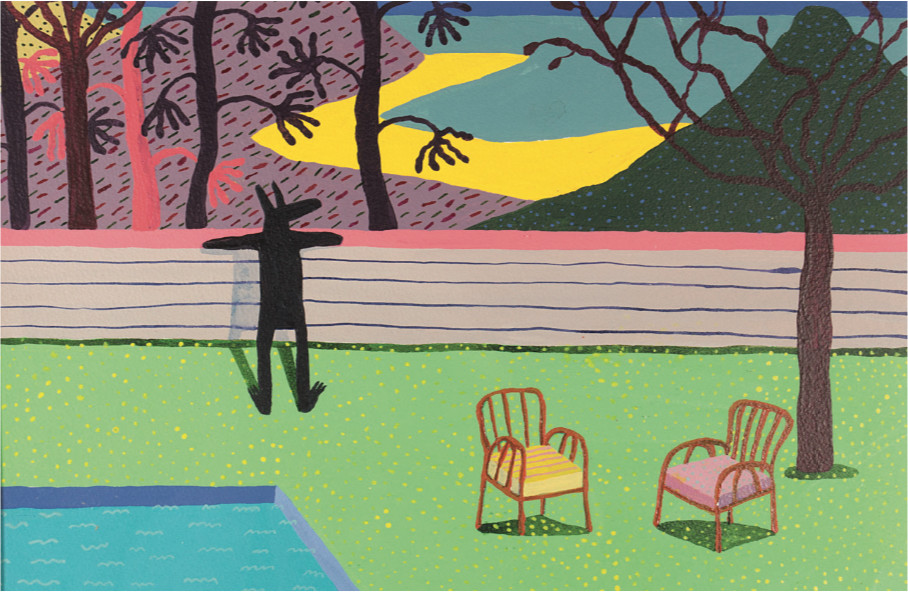
Yet these colours are lures and Evan Sohun‘s seemingly joyful works tell deep Creole and African stories that are also fundamentally universal. “My work is a denunciation, there is sometimes anger and frustration.” To this he evokes the title of the Rock Radiohead band’s song “No Surprises”. “It’s a beautiful ballad, but the lyrics are poignant. My works are a little bit like that song, they’re cheerful and colourful at first glance, but in the end, they tell a less joyful reality. I’m talking, among other things, at least in my current work, about a certain inequality that makes us who we are today. »
A heart that’s full up like a landfill
A job that slowly kills you
Bruises that won’t heal
You look so tired, unhappy
Bring down the government
They don’t, they don’t speak for us
I’ll take a quiet life
A handshake of carbon monoxideWith no alarms and no surprises
No alarms and no surprises
No alarms and no surprises
Silent, silent2Lyrics of the Radiohead song “No Surprises”.
“Where do we come from? Why are we here today? Why are we this way? Why did this happen?…We’ve been put in boxes and it’s hard to escape”.
Among the many subjects he addresses in his work appear social inequalities, the ego-centrism of modern society, the eternal human greed… We also find questions of immigration, in particular a reference to the notion of indentured, forced labour, intrinsically linked to the history of Mauritius and which the English historian, Hugh Tinker, called “a new form of slavery”.3A New System of Slavery: The Export of Indian Labour Overseas 1820-1920 by the historian Hugh Tinker, published in 1974.
This is the story that the work Marsan rev (Someone selling ‘Dreams’) tells in particular. In the background this beautiful sugar cane field, painted in shimmering colours, hides a very dark story. That of the hired labourers who landed on the Ile de France – the name of Mauritius at the time of French domination – at the beginning of the 18th century during the 1830s. 4Claude WANQUET, La France et la première abolition de l’esclavage (1794-1802) [le cas des colonies orientales, île de France (Maurice) et la Réunion], Paris, Karthala, 1998, 664 pp, Les Indiens des Mascareignes. Simple Jalons pour l’histoire d’une réussite, Hubert Gerbeau, 2002.
Indentured and colonial past
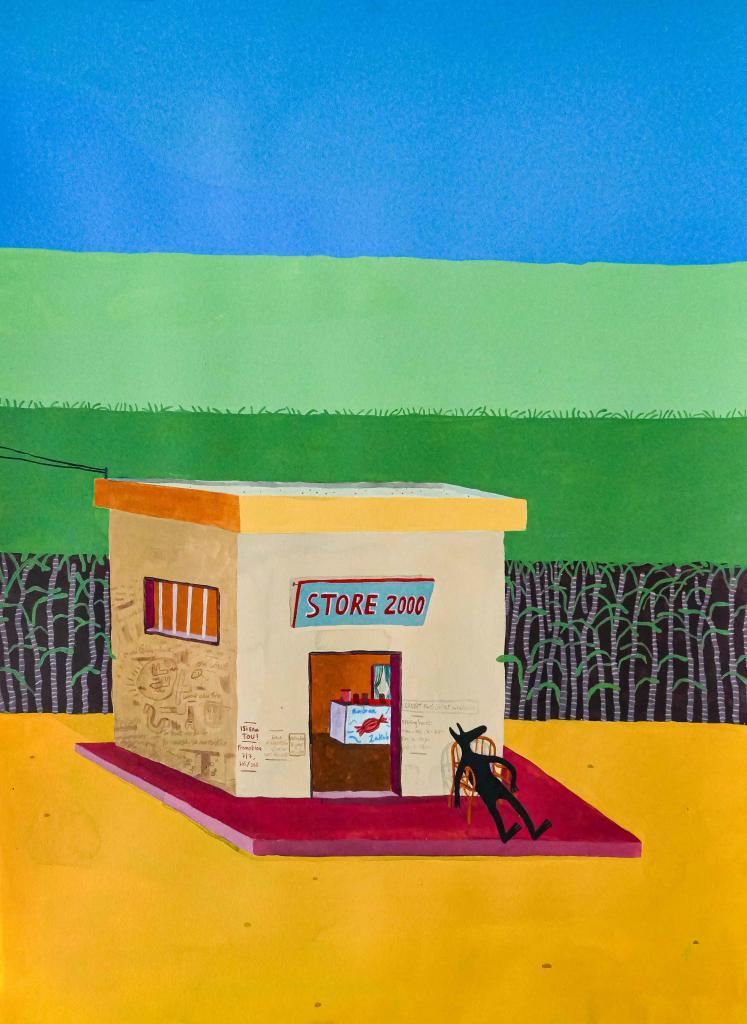
The establishment of the contract of indentured (and its French equivalent: Engagisme)5The two terms are equivalent, in so far as in Mauritius the owners were mostly French-speaking, but subject to the rules of English law. Different authors therefore speak of both engagisme and indentured, even in relation to the same field stipulated that the captain (and/or an employer in the colonies) would advance the travel expenses to the migrant who, in exchange, undertook to work for between five and seven years in order to reimburse his debt. During this time, the engaged can be sold (or “transferred”) and owes all his time to his master/creditor. Any negligence on his part, any failure to comply with work instructions, any waste of raw materials or tools is punishable by penalties. These are expressed in the form of deductions from wages or, if necessary, in days or even weeks of overtime work. In a word, the debt of the employee could often be extended indefinitely. Towards the end of the 18th century, Indians made up 40 per cent of the free men of colour, but only 15 per cent of the servile population. 6Servants, Sirdars and Settlers: Indians in Mauritius, 1834-1874 (Oxford University South Asian Studies) published in 1995 by Marina Carter.
Between the 1830s and 1920s, of the approximately 2 million Indians, Africans and Chinese bound for the Indian Ocean, Southern Africa, the Americas and the West Indies concerned by these contracts, a quarter of them went to the Mascarene Islands. The English administration encourages indentured immigration. These “voluntary” immigrants 7R. Steinfeld, 1991; S. Engerman, 1999; M. Bush, 2000; F. Cooper, T. Holt, R. Scott, 2000; T. Brass, M. Van der Linden, 1997. Because of the complexity of these forms of immigration and work, an important point in the historiographical debate concerns the degree of freedom of immigrants and, consequently, the boundaries between indentured immigration and slavery on the one hand, and indentured, wage labour and “voluntary” emigration on the other. A first orientation consists in likening contracts of employment and indentured labour to forced labour; these contracts would express a “legal fiction” because, in reality, they would be slavery in disguise, as immigrants have no real rights. In recent decades, this interpretation has been put forward by several authors, some of whom are linked to subaltern studies. However, other historians have challenged this image and have emphasized the distance between the indentured contract and slavery. Main Source: Indentured immigration in Mauritius, 1840-1870: conditions, abuse and resistance by Alessandro Stanziani, Professor of World History at the École des hautes études en sciences sociales (EHESS) of the PSL Research University, France. He is the author of seven books and more than 130 peer-reviewed articles and has edited eight books were employed in the Plantocracies8The term Plantocracy is defined as dominant classes that are quite capable of extracting and accumulating capital in the islands. The Mauritian plantocracy pushed the development of the island to the limits imposed by geography and the structure of the sugar industry. Excerpt from the book “Politique Africaine – les puissances moyennes africaines” by Jean Houbert Page 83. Decolonization in Creole countries: Mauritius and Reunion Island. June 10, 1983. Mauritius’ sugar mills. Mestries or recruiters were sent to India, often to promise mountains and wonders to coolies or other Indians, especially those who were the victims of the Cipays revolts 9The popular uprising that took place in India in 1857 against the English East India Company. Also known as the First Indian War of Independence or the Indian Rebellion of 1857and subsequent famines.
“Popular legend has it that in colonial times the British promised the Indians that if they came here to work the land, especially in the sugar cane fields, they would find gold underneath the stones. “
” Toudim finds himself in a small hut not far from the cane fields… He’s still searching even if he doesn’t know it,” Evan explains. The disillusionment was thus immense for these candidates for economic exile – often unpaid – who laid the foundations of the coolie trade, a trade in brown arms of sinister memory, which was to take such inhuman turns that revolts and cases of vagrancy, suicide or death “out of nostalgia” were frequent.
Evan has come to affirm his art after periods of doubt and questioning, but he has managed to make his difference his strong signature. “Today, I seek perfection in imperfection.” In the future Evan wishes to create more on canvas than on paper, which remains for him a natural and comfortable medium. He is definitely an artist to watch closely.
Evan Sohun is represented by Imaaya Gallery in Mauritius.

